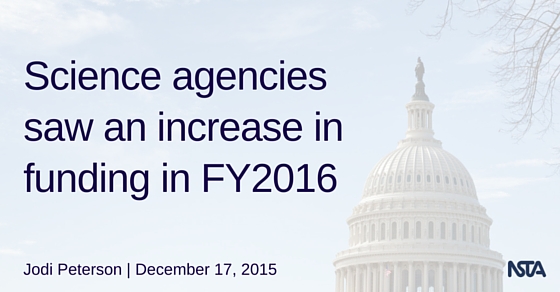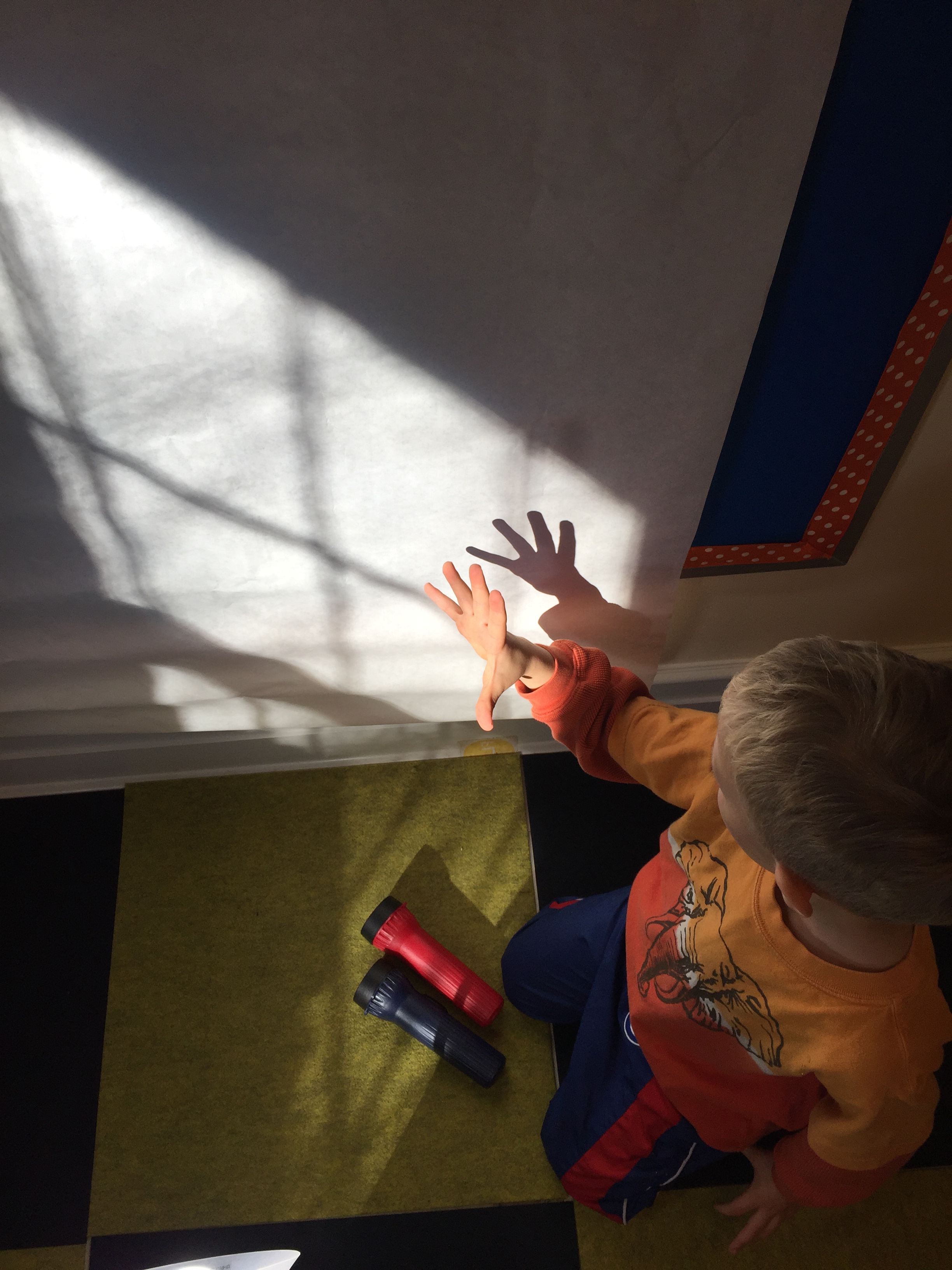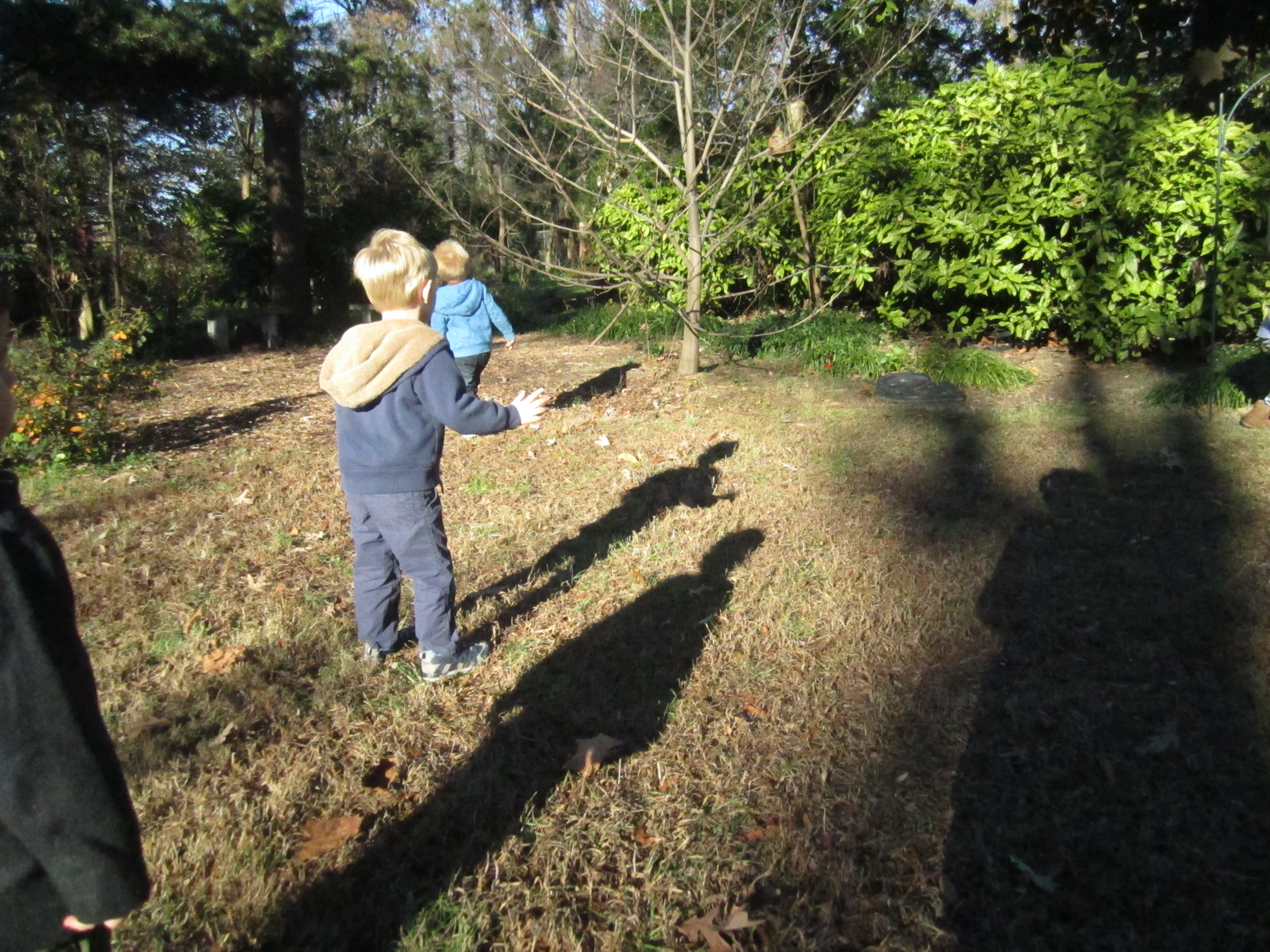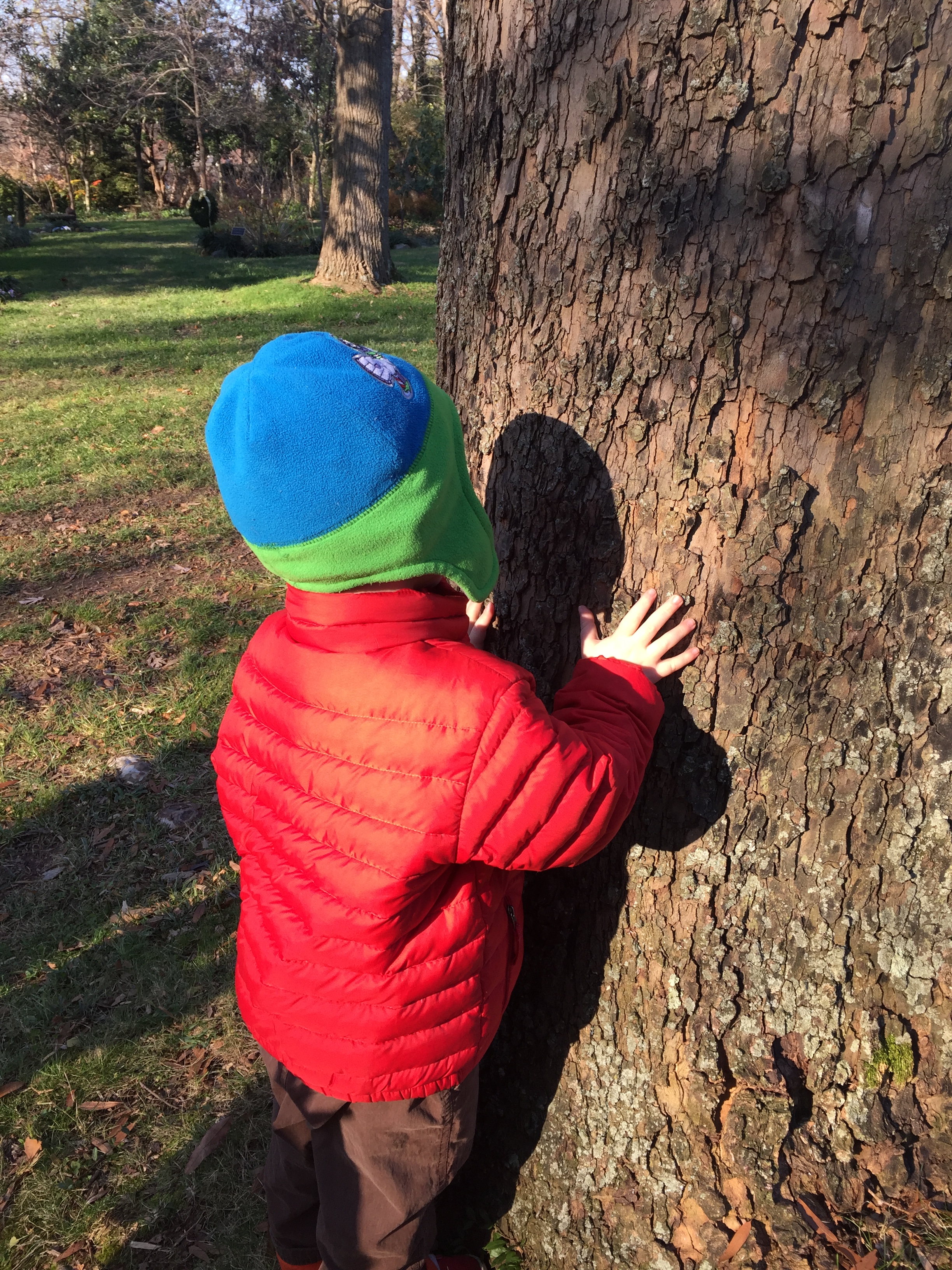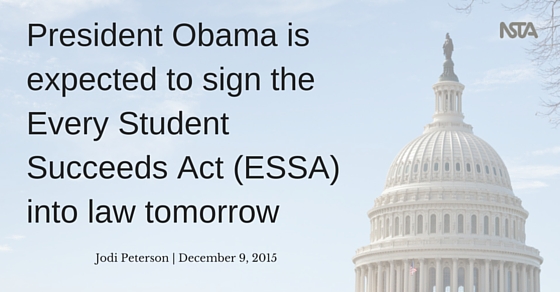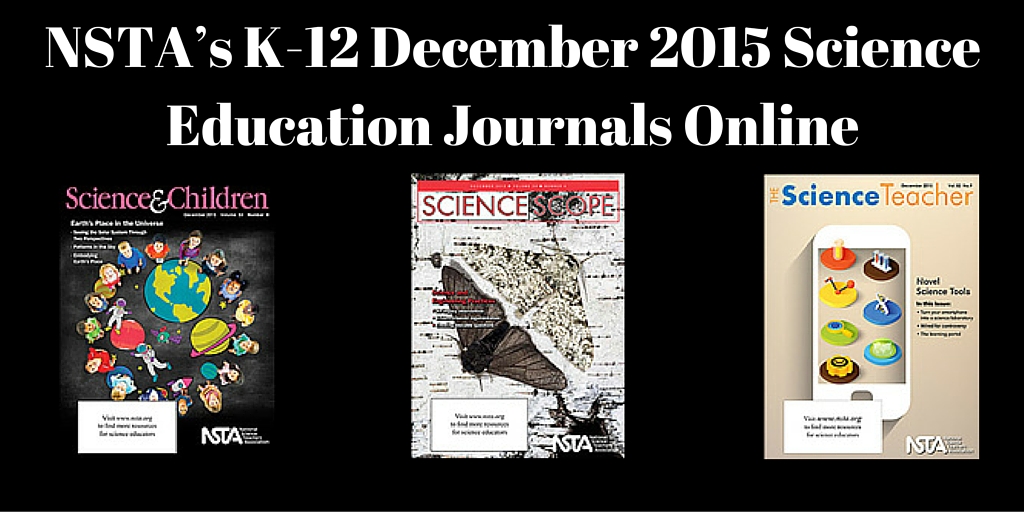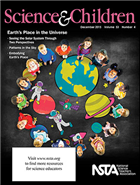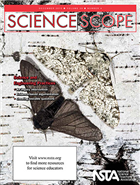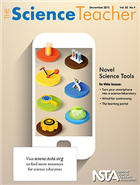"Group" work in elementary science?
By Mary Bigelow
Posted on 2015-12-20
 I’m a first year teacher, teaching third grade. In my undergraduate work and student teaching, I worked with math and reading groups, but not much was mentioned about using small groups in science or social studies. I’m curious about how to go about setting up and managing group work in these subjects. —D., Washington
I’m a first year teacher, teaching third grade. In my undergraduate work and student teaching, I worked with math and reading groups, but not much was mentioned about using small groups in science or social studies. I’m curious about how to go about setting up and managing group work in these subjects. —D., Washington
In math and reading, you probably worked directly with small groups of students while the rest of the class did other activities. The small groups were structured based on student reading levels or achievements in math, and you tailored the instructional activities to meet the students’ needs.
In science and social studies, however, you’ll probably have the whole class working in groups on the same activity or rotating through a set of learning activities or stations. As the teacher, you will work with the groups as needed, but the groups will work without direct one-to-one supervision. This requires planning and organization, as well as instructions for the students on how to work safely and cooperatively.
If you do an online search for cooperative learning strategies for elementary students, you’ll find many different organizational strategies. But the literature is clear: assigning students to groups and giving them an activity is not necessarily the same as cooperative learning. It’s essential for each student to have a role in the group so they share the responsibility for learning. The roles may vary from one activity to another, but could include group leader, presenter, data recorder, measurer, equipment manager, liaison (to ask questions of the teacher or other teams), artist, online researcher, questioner, timekeeper, and notetaker.
Regardless of what roles you use, be sure that students understand their responsibilities.
These “job descriptions” could be in the form of checklists, a bulletin board display, index cards, or a page in the students’ science notebooks. The job descriptions could include mini-rubrics and conversation starters. I’ve seen teachers make “badges” for the students to wear to identify who is doing what job. Ask students to describe how they and their teammates did their jobs (this could be a exit activity). Rotate the roles so all students have a variety of experiences.
Most teachers would agree there is no “best” way to set up groups. Some teachers suggest grouping students by ability, as is often done in reading or math groups. I’m not sure how to determine science ability, especially at the third grade level, so I suspect teachers use factors such as reading or math grades, work habits, or behavior.
One option is to assign groups randomly. As the students work together, you can observe how different combinations of personalities work together: who are the leaders, the thinkers, and the creators; which students need closer supervision; which students clash; and which students struggle with the activities.
There are other student variables to consider. Depending on your observations, you may find single-gender groups provide more opportunities for equitable student participation (this was true for my seventh graders). If your class includes students with special needs, check with the special education teachers to determine their needs in terms of their individual education plans. If an activity requires a lot of reading, you may want to have a combination of reading abilities in each group.
To keep the groups focused and on-task, students should understand the expectations for the project or investigation, including any safety concerns. Monitor the groups as they work and provide feedback, listen to their discussions, and observe their interactions (this can be a formative assessment).
Some students may not have developed a high level of interpersonal skills. Start with brief and highly structured activities. Model what cooperative behavior “looks like,” and work with them on what types of language is appropriate in their groups.
Cooperative learning models also emphasize the importance individual accountability. You could have the group create some parts of a report together (perhaps in their notebooks, on chart paper, or on a online class page) and then have each student write or draw his or her own summary or conclusion. Some teachers hold each student be responsible for one part of a project, evaluating each component separately and then assigning a holistic evaluation for the entire project.
On a practical note, I found that having a color-coded box or tray for each group makes it easier to organize and count the materials and have everything is in place before going onto the next lesson.
There are times when cooperative learning is effective, times when large group instruction is appropriate, and times when you want students to work independently.
Don’t forget–teaching both science and social studies gives you an opportunity for some interesting interdisciplinary work!
 I’m a first year teacher, teaching third grade. In my undergraduate work and student teaching, I worked with math and reading groups, but not much was mentioned about using small groups in science or social studies. I’m curious about how to go about setting up and managing group work in these subjects. —D., Washington
I’m a first year teacher, teaching third grade. In my undergraduate work and student teaching, I worked with math and reading groups, but not much was mentioned about using small groups in science or social studies. I’m curious about how to go about setting up and managing group work in these subjects. —D., Washington
The Science of Art by guest blogger Carrie Heflin
By Peggy Ashbrook
Posted on 2015-12-19
Welcome to guest blogger Carrie Heflin! Carrie was a pre-k classroom educator at the Smithsonian Early Enrichment Center for four years. With everyday access to the museums on the National Mall, she developed her students’ understanding of art concepts. Her teaching put attention on the connections between artwork and science concepts. She is now the Professional Development Coordinator for the Smithsonian Early Enrichment Center and the Exhibit Coordinator for Wegmans Wonderplace at the National Museum of American History.
As early childhood educators, we are all familiar with the questions that weigh on parents’ and caregivers’ minds: How does my child’s development stack up to that of her or his peers? What should I be doing at home to help my child learn more, faster? What kind of school is best for my child?
Educators and school administrators constantly make difficult decisions regarding the quality and content of the educational experience they are able to provide for their students. We are aware that young children need sensory experiences and multiple exposures to materials to ensure that they are properly able to learn new skills and remember information. Adding more Arts-based programming into the curriculum is a logical way to accomplish these goals because art comes naturally in many forms such as painting, sculpture, literature, theater and music.
These media can engage various senses and reinforce ideas both through their more passive interactions, such as watching a play or looking at a painting, and through hands-on creation. However, the Arts are often under-utilized in school settings because proper training on their cross-curricular use is not made available to educators and funding for such trainings and programs is lacking. Many people also consider the Arts to be an intimidating field. They understandably feel ill equipped to teach using subject matters with which they are not familiar. There are some simple tips one can follow to start thinking about and using the Arts more in the classroom- regardless of subject matter or grade level.
 First, start looking for connections. Time and again we are asked to weed out any subject whose contribution toward success cannot be weighed and measured in neat letters and numbers and to cast it aside. However, as any early childhood educator can tell you without hesitation, one area of learning and development cannot be separated from another. You cannot ask whether music is more important than math because music is math. Each note represents a fraction of a measure. Each bar is the sum of its notes. Science cannot be separated from art. Every building or monument on this planet is equal parts a testament to its architect’s engineering skills and her or his creativity. Literature cannot be separated from its dramatic representation in the theater because words are meaningless unless there are people sharing them with each other.
First, start looking for connections. Time and again we are asked to weed out any subject whose contribution toward success cannot be weighed and measured in neat letters and numbers and to cast it aside. However, as any early childhood educator can tell you without hesitation, one area of learning and development cannot be separated from another. You cannot ask whether music is more important than math because music is math. Each note represents a fraction of a measure. Each bar is the sum of its notes. Science cannot be separated from art. Every building or monument on this planet is equal parts a testament to its architect’s engineering skills and her or his creativity. Literature cannot be separated from its dramatic representation in the theater because words are meaningless unless there are people sharing them with each other.

Ernesto Neto, “The Dangerous Logic of Wooing,” 2002. Installation view of “At the Hub of Things: New Views of the Collection” at the Hirshhorn Museum and Sculpture Garden, Smithsonian Institution, Washington DC, 2014. Photo: Cathy Carver
Second, apply the connections between broader subject matters to specific pieces of works of art. With very little prompting, even a young child can look at a work of contemporary art like Ernesto Neto’s The Dangerous Logic of Wooing and make the connection between a massive sculptural installation and the principles of physics. I have seen it happen through my work as an educator at the Smithsonian Early Enrichment Center (SEEC). My pre-k class went to see this piece by Neto and talked about how the way the sculpture is suspended from the ceiling is a good visual representation of the pull of gravity. I showed my class images of astronauts in space who are floating around and talked about how gravity is the force that keeps us from floating around here on earth. We don’t usually notice it, but it can be seen in the way big objects, like this sculpture, hang down when they are suspended. The curator of this museum exhibition and the artist who created the piece had to work together to develop a system for hanging it that would be strong enough to hold up the massive artwork against the force of gravity that is pulling on it.
 Then we thought about how the force of gravity affects the way our own bodies move around. We performed the basic motions of raising our arms and lifting our feet and talked about how our muscles and bones have to work against gravity just to allow us to move around. In a later lesson about muscles, we applied our experience of the force of gravity to talk about why we have to exercise and strengthen our muscles in order to perform harder tasks such as running fast or lifting heavy objects. Months later, I heard pieces of my lessons being incorporated into play scenarios where my students were talking about making their leg muscles stronger by doing a lot of running.
Then we thought about how the force of gravity affects the way our own bodies move around. We performed the basic motions of raising our arms and lifting our feet and talked about how our muscles and bones have to work against gravity just to allow us to move around. In a later lesson about muscles, we applied our experience of the force of gravity to talk about why we have to exercise and strengthen our muscles in order to perform harder tasks such as running fast or lifting heavy objects. Months later, I heard pieces of my lessons being incorporated into play scenarios where my students were talking about making their leg muscles stronger by doing a lot of running.
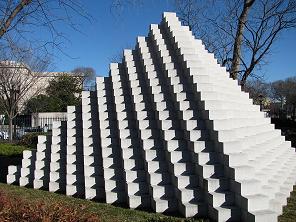
Sol LeWitt “Four-Sided Pyramid”, 1999, first installation 1997 National Gallery of Art, Washington Gift of the Donald Fisher Family. Photograph of artwork taken by Slowking4.
Creating art is also an excellent way to introduce concepts of physics and engineering. When my class was learning about ancient Egypt, we went to see Sol Lewitt’s Four-Sided Pyramid at the National Gallery of Art Sculpture Garden to encourage thinking about how the various pyramids of ancient Egypt were built. We brought plastic Lego blocks along to demonstrate some possible shapes that wouldn’t work with the building materials on hand. For instance, the children figured out very quickly that the base of the structure needed to be larger than, or at least equal to, the size of the top or it would tip over. Then we tried to create a pyramid model, working from the design of the sculpture and images of the Great Pyramids. Individual children were able to use the Lego blocks to create an object that closely resembled the sculpture, but we were unable to make a smooth-sided pyramid. The class concluded that we either, didn’t have enough blocks, or didn’t have the right kind of blocks. This kind of hands-on problem solving, inspired by a sculpture, created a lasting impression on my class. It has been over two years since our first lesson and one student still regularly teaches lessons on Egypt to his family when they come to the museums.
This is just a small example of what the Arts can add to a classroom experience. If you don’t have access to a museum or gallery on a regular basis, use technology. Th
ere are countless images available online that can help bring art to you and your students. Be creative, look for connections between art and science concepts, and remember: Art, in all its many forms, is the human representation of knowledge that gives it meaning. When we take away that meaning, we aren’t setting our children up for success. We are setting them adrift in a sea of numbers and letters without context or purpose.
Welcome to guest blogger Carrie Heflin! Carrie was a pre-k classroom educator at the Smithsonian Early Enrichment Center for four years. With everyday access to the museums on the National Mall, she developed her students’ understanding of art concepts. Her teaching put attention on the connections between artwork and science concepts.
Education Gets $1.2 Billion Increase in FY16 Omnibus
By Jodi Peterson
Posted on 2015-12-17
Earlier this week the House Appropriations Committee released the FY 2016 Omnibus Appropriations bill, which provides for discretionary funding for the federal government through the end of the fiscal year, September 30, 2016.
The bill funds the Department of Education at $68 billion, a $1.2 billion increase above the fiscal year 2015 level.
Although the program was not reauthorized in the Every Student Succeeds Act, FY16 funding for the Math and Science Partnerships was $152,717,000. Title II Teacher Quality grants were funded at $2,349,830,000 and 21st Century Community Learning Centers were funded at 1,166,673,000. Congress did not provide funding for Next Generation High Schools, a new program heavily promoted by the Obama Administration.
Title I grants to local school districts received $14.9 billion, an increase of $500 million above the 2015 level. Funding for the Individuals with Disabilities Education Act would increase by $415 million, to $11.9 billion total. See the chart of funding for FY2016 STEM federal programs.
A tax proposal would extend the teacher tax credit that allows teachers to deduct out-of-pocket classroom expenses through the end of 2016, and adjust the $250 tax credit for inflation in future years.
Overall funding for the science agencies was very positive this year. The National Science Foundation saw a modest 1.6 percent funding increase, up $119.3 million for a total budget of $7.46 billion for FY2016. NSF’s education programs received $880 million, a $14 million increase from last year. STEM+C Computer Science Partnerships Program was level funded at $57 million.
NASA saw a 7.1% increase in funding, the NOAA increase was 5.8 %, and the increase for funding for the National Institutes of Standards and Technology (NIST) was 11.6 %. The Department of Energy Office of Science received a 5.5 % increase, while funding for the DOD Science and Technology will increase 8.2%.
The House of Representatives is expected to vote on the funding package this Friday, December 18, with a Senate vote shortly thereafter. The government is currently being funded with a short term stop gap funding resolution that will expire on December 22.
What’s Next for the Every Student Succeeds Act?
What’s ahead for the new federal education law, the Every Student Succeeds Act, now that the president has signed the bill into law?
States and schools will have to transition to the new law from No Child Left Behind. The waivers to NCLB provided to states will be void by August 1, 2016, and the new federal law is expected to be in place beginning in the 2017-18 school year. Some issues in the new law will require the Department to do negotiated rulemaking, a process where representatives from the Department of Education and members from the education community meet to negotiate the terms of the new law.
Education Secretary Arne Duncan said the Department will send out guidance to states on the new law and next steps for implementation soon.
Jodi Peterson is Assistant Executive Director of Legislative Affairs for the National Science Teachers Association (NSTA) and Chair of the STEM Education Coalition. e-mail Peterson at jpeterson@nsta.org; follow her on Twitter at @stemedadvocate.
The mission of NSTA is to promote excellence and innovation in science teaching and learning for all.
Follow NSTA
Constructivist theory and its use in the Next Generation Science Standards
By Robert Yager
Posted on 2015-12-17
The people involved with the Next Generation Science Standards (NGSS) have indicated that they did not plan to “mess” with teaching goals, professional development of teachers, and the ways teachers teach which were used as headings in the 1996 National Science Education Standards (NSES). But the National Governors Association has called for improving “training” of teachers — but many professionals find the word “training” of teachers as an example of failure to indicate any teachers and their teaching as “professional.” The report focuses on career pathways without adequate evidence for achieving the reforms; nor does it suggest the need for collaboration for teachers, administrators, parents, and community leaders. Perhaps, more is needed in the New Standards than merely STEM (Science, Technology, Engineering, and Mathematics) efforts as the heart of the outline for the NGSS for all to use in 2016 and beyond?
When the NSES (1996) was released, it indicated four goals for school science to produce students who: 1) experience the richness and excitement of knowing about and understanding the natural world; 2) use of appropriate science processes and principles in making personal decisions; 3) engage in public discourse and debate about matters of scientific and technological concern; and 4) increase their economic productivity in their use of the knowledge, understandings, and skills of scientifically literate persons concerning their careers.
The teaching section of the Standards began with major ways science teaching should improve. The advocated changes were the easiest to assess and to develop (with little debate or objections). These Standards said there should be less emphasis in teaching of the following: 1) treating all students alike and responding to the group as a whole; 2) rigidly following curriculum; 3) focusing on student acquisition of information; 4) presenting scientific knowledge guided by lectures, texts, and demonstrations; 5) asking for recitation of acquired knowledge; 6) testing students regarding factual information at the end of the unit or chapter; 7) maintaining teacher responsibility and authority; 8) supporting competition; and 9) working alone.
Conversely, the Standards called for more emphasis on the following:
1) understanding and responding to student interests, strengths, experiences, and needs; 2) selecting and adapting curriculum; 3) focusing on student understanding and use of scientific knowledge, ideas, and inquiry processes; 4) guiding students in active and extended scientific inquiries; 5) providing opportunities for discussion and debates among students; 6) continuously assessing student understanding (and involving students in the process); 7) sharing responsibilities for learning with students; 8) supporting a classroom community via cooperation, shared responsibilities, and respect; and 9) working with other teachers to enhance the school science program.
Interestingly, there has been little progress to increase emphasis of these nine conditions. And unfortunately, the items that the NSES said be emphasized less remain largely unchanged with respect to the changes advocated. The Governors Association report does not seem to help with the reforms and the actual changes needed in teaching for the reforms to succeed. They ignore the Wiggins and McTighe’s recommendations for “Backward Design.” The stages in the Backward Design process are: identify desired results, determine acceptable evidence, and do both before planning learning experiences and lesson planning.
It has been 50 years since Vygotsky offered the Constructivist Learning Theory. It essentially encouraged students to construct their own interpretations of actions as they explored the environment they are in and offer their own ideas for explaining the objects and events encountered. The constructivist practices have been described as: 1) posing problems of emerging relevance to learners; 2) structuring learning around “big ideas” or primary concepts; 3) seeking and valuing varied student points of view; 4) adapting curriculum to address student involvement; and 5) assessing student learning in the context of reform teaching.
Constructivist theory influenced Carl Sagan’s statement that all humans start out as scientists who are curious, seek explanations, collaborate with others concerning questions and ideas about their current and daily lives. Constructivist practices encourage all to explore the explanations that are offered by others and encourage all to collect evidence for supporting their explanations. Yet K-12 students of science seldom accomplish better understanding of the universe. How can we get more practitioners involved in correcting the real problems with school science?
Robert E. Yager
Professor of Science Education
University of Iowa
The people involved with the Next Generation Science Standards (NGSS) have indicated that they did not plan to “mess” with teaching goals, professional development of teachers, and the ways teachers teach which were used as headings in the 1996 National Science Education Standards (NSES).
Did They Really Read It?
By sstuckey
Posted on 2015-12-16
[youtube]https://youtu.be/ThHYGzvrxZ0[/youtube]
In this video, columnist Jared Mader shares information from the Science 2.0 column, “Did They Really Read It?” that appeared in a recent issue of The Science Teacher. Read the article here.
[youtube]https://youtu.be/ThHYGzvrxZ0[/youtube]
In this video, columnist Jared Mader shares information from the Science 2.0 column, “Did They Really Read It?” that appeared in a recent issue of The Science Teacher. Read the article here.
Shadow formation and natural or electric light
By Peggy Ashbrook
Posted on 2015-12-15
At mid-December the children’s morning shadows are recognizably long. Over time, through repeated observations made formally or just in casual comments, children begin to notice that the position of the sun in the sky changes during the day. Kindergartners may notice that the sun also changes position during the year, depending on how often they are able to be outside and have a conversation about the sun’s location.
When young children begin to explore shadow formation they don’t understand the relationship between the light source and shadows. It’s interesting to see them realize that they have to place their body in the light from a source to create a shadow. Understanding that their body blocks the light comes even later.
 Challenge children to make a shadow “bigger” or “smaller,” and “longer” or “shorter,” as they play with a flashlight. By describing both a flashlight and the sun as “light sources” we help children make connections between the movement of a flashlight and the movement of the sun—movement that changes the shape and position of shadows.
Challenge children to make a shadow “bigger” or “smaller,” and “longer” or “shorter,” as they play with a flashlight. By describing both a flashlight and the sun as “light sources” we help children make connections between the movement of a flashlight and the movement of the sun—movement that changes the shape and position of shadows.
At mid-December the children’s morning shadows are recognizably long. Over time, through repeated observations made formally or just in casual comments, children begin to notice that the position of the sun in the sky changes during the day. Kindergartners may notice that the sun also changes position during the year, depending on how often they are able to be outside and have a conversation about the sun’s location.
The Paris Agreement: What Do Science Teachers Need to Know for Class on Monday?
By Lauren Jonas, NSTA Assistant Executive Director
Posted on 2015-12-12
The Paris Climate agreement is top news this weekend. Here are a few resources teachers can share with their students on Monday.
Share this tweet
Seeing the Earth from 250 miles up gives you a new appreciation for why we need to take care of it. #ParisAgreement pic.twitter.com/mGPdUKRRi7
— Mark Kelly (@ShuttleCDRKelly) December 12, 2015
Breaking from Nature News: Nations approve historic global climate accord. Agreement forged in Paris aims to hold warming “well below” 2°C.
Watch as the President Delivers a Statement on the Paris Climate Agreement
Read the New York Times article “Nations Approve Landmark Climate Accord in Paris.” This article gives a nice summary, starting with “representatives of 195 countries reached a landmark climate accord that will, for the first time, commit nearly every country to lowering planet-warming greenhouse gas emissions to help stave off the most drastic effects of climate change.”
Find the source document from the United Nations: Adoption of the Paris Agreement
Glance at the key points, from the Guardian. “The goal of 1.5C is a big leap below the 2C agreed six years ago in Copenhagen. Here’s what the agreement means for global emissions and the future of the planet.”
Get more from NSTA at our special focus site on Climate Science Resources.
The mission of NSTA is to promote excellence and innovation in science teaching and learning for all.
Follow NSTA
The Paris Climate agreement is top news this weekend. Here are a few resources teachers can share with their students on Monday.
Share this tweet
Seeing the Earth from 250 miles up gives you a new appreciation for why we need to take care of it. #ParisAgreement pic.twitter.com/mGPdUKRRi7
Teacher-leaders
By Mary Bigelow
Posted on 2015-12-11
 My principal tells me I have “leadership potential.” I’ve been teaching Earth science for 11 years. I like my students and I feel confident with the curriculum. I don’t want to leave the classroom, but a little voice keeps whispering that she may be right. Should I try something new? —B., New York
My principal tells me I have “leadership potential.” I’ve been teaching Earth science for 11 years. I like my students and I feel confident with the curriculum. I don’t want to leave the classroom, but a little voice keeps whispering that she may be right. Should I try something new? —B., New York
What a vote of confidence from your principal! She must see something in you that can and should be shared with others. I can understand your hesitation to move to an administrative position, just as you have developed a repertoire of teaching strategies and a good rapport with students. But after 11 years you might be ready for new and challenging opportunities, in or out of the classroom.
I would listen to your little voice and look into your state’s requirements to earn credentials as a supervisor, principal, or curriculum specialist. In an administrative position, your insights and experience would make you a valuable resource for the science faculty. You would have first-hand experience with a teacher’s responsibility for safety in the labs and security in the storage areas. You would know how much behind-the-scenes work science teachers do, and you would be aware of the hazards (and possible liabilities) of scheduling non-science classes or study halls in lab classrooms. Working with a principal or curriculum director who understands the Next Generation Science Standards (NGSS) and the unique demands of science instruction would be a dream come true for many teachers.
Even if you work toward the credentials, it doesn’t mean you have to become a principal or central office administrator. The coursework, reflective processes, and internship can give you a big-picture look at schools as part of a system and how science education fits into school-wide issues and initiatives (I found the school law courses to be eye-opening). Having administrative credentials can open the door for other opportunities, too.
On the other hand, if you’re not ready for more coursework, perhaps becoming a “teacher-leader” would be a better option.
This includes a variety of roles within the school or district: an advocate for science on school committees and task forces, department chairperson, instructional coach, mentor for new or struggling teachers, advisory board member, grantwriter, team leader, or project director. You could get involved with curriculum development, conduct action research, pilot new technologies, or attend/present at school board meetings. These opportunities for teacher-leadership would not require leaving the classroom.
Professional development is another arena for teacher-leaders. You could offer workshops for teachers in your district or others. (A district I worked in used teacher leaders to do most of the summer academy sessions.) Or check with a regional service agency or informal science organization to see if they need workshop presenters or advisors. Consider sharing your experiences and expertise by writing articles for NSTA journals or presenting at conferences, too. It’s inspiring for others to hear from real practitioners.
Networking is an important part of being a teacher-leader, and social media provides many ways to work with and learn from our colleagues (for example, participating in NSTA’s discussion forums and e-mail lists, communicating with other teacher-leaders through Facebook, or participating in chats on Twitter)
As a potential teacher-leader or administrator, don’t underestimate the value of your contributions. I’m sure you have the skills and knowledge, as well as a passion for science, which will enable you to be a valuable resource not only to your students, but also to your school and to the profession. And it sounds like you already have a mentor for the process.
Senate Passes ESSA, President Obama to Sign Bill into Law Tomorrow, Dec. 10
By Jodi Peterson
Posted on 2015-12-09
On Weds. Dec. 9, the Senate approved the bill to reauthorize No Child Left Behind by a vote of 85 to 12, and President Obama is expected to sign the Every Student Succeeds Act (ESSA) into law tomorrow, ending the seven year effort to replace the widely unpopular 2002 federal education statute with a new law that provides much more power back to the states and local districts.
The 12 Senators voting against the bill were Sens. Roy Blunt (MO), Mike Crapo (ID), Steve Daines (MT), Jeff Flake (AZ), Mike Lee (UT), Jerry Moran (KS) , Rand Paul (KY), James Risch (ID), Ben Sasse (NE), Tim Scott (SC), Richard Shelby (AL) and David Vitter (LA). The three presidential candidates, Sens. Cruz, Rubio and Sanders, did not vote.
Last week, the House passed the bill by a vote of 369 to 64 on Wednesday, December 2, to approve the Every Student Succeeds Act.
The ESSA consolidates a number of programs (including the Math and Science Partnership) into a block grant to the states. Although it maintains the federal rule on testing (once every year in grades 3-8 for ELA and math and three times in science), the new law provide more opportunities for districts and states to develop and provide STEM opportunities to students and professional learning to teachers.
For background information on the bill to reauthorize No Child Left Behind and the Every Student Succeeds Act (ESSA) please read this blog.
Jodi Peterson is Assistant Executive Director of Legislative Affairs for the National Science Teachers Association (NSTA) and Chair of the STEM Education Coalition. e-mail Peterson at jpeterson@nsta.org; follow her on Twitter at @stemedadvocate.
The mission of NSTA is to promote excellence and innovation in science teaching and learning for all.
Follow NSTA
NSTA’s K-12 December 2015 Science Education Journals Online
By Korei Martin
Posted on 2015-12-09
Want to give your students a sense of the Earth’s place in the universe? Wondering how you can strengthen your students’ grasp of science and engineering concepts? Curious about how today’s technology can assist you in teaching? The December K–12 journals from the National Science Teachers Association (NSTA) have the answers you need. Written by science teachers for science teachers, these peer-reviewed journals are targeted to your teaching level and are packed with lesson plans, expert advice, and ideas for using whatever time/space you have available. Browse the December issues; they are online (see below), in members’ mailboxes, and ready to inspire teachers!
As scientists continue to investigate other planets and solar systems, understanding the universe has become increasingly important. This issue of S&C offers ways to help you deepen your students’ interest in Earth’s place in the universe.
Featured articles (please note, only those marked “free” are available to nonmembers without a fee):
- Adapt or Discard?
- Free – Editor’s Note: Earth’s Place in the Universe—Understanding Develops Over Time
- Free – Embodying Earth’s Place in the Solar System
- Fossil Explorers
- Map That Find!
- Patterns in the Sky
- Seeing the Solar System Through Two Perspectives
- Table of Contents
Having students construct an evidence-supported explanation of why an insect’s coloring might affect its population size is just one way to assess their mastery of specific science practices. You’ll find other strategies for assessing and strengthening students’ grasp of science and engineering practices inside this issue of Science Scope.
Featured articles (please note, only those marked “free” are available to nonmembers without a fee):
- Argumentation and Explanation: Tools for Using Them Together While Keeping Them Separate
- Assessing Science Practices: Moving Your Class Along a Continuum
- Authentic Science Investigation in the Classroom: Tools for Creating Original, Testable Questions and Graphical Hypotheses
- Free – Editor’s Roundtable: The End of the Grand Parade
- Free – My Journey to Understand and Implement the NGSS
- Present, Critique, Reflect, and Refine
- The ICAN Intervention: Helping Science Learners Make Connections to Content During Inquiry
- Table of Contents
In the classic 1980s Back to the Future films, the imagined world of 2015 contained an array of fantastic new technologies, from flying cars and hovering skateboards to flat panel televisions and video chat systems. We don’t yet have flying cars or hoverboards, but if the films’ characters could have time-traveled to a real 2015 science classroom, they would have been amazed by the technologies actually available to today’s teachers, tools unimaginable 30 years—or even a decade—ago. This issue describes some of these new technologies: GIS mapping tools to plot bird diversity, digital probeware to study the greenhouse effect, online simulations to investigate DNA and energy, and even cell phones as digital sensors to explore Newton’s laws of motion.
Featured articles (please note, only those marked “free” are available to nonmembers without a fee):
- Clearing the Air
- Climbing the NGSS Mountain
- Free – Editor’s Corner: The Future Is Now
- The Learning Portal
- Turn Your Smartphone Into a Science Laboratory
- Where the Birds Live
- Free – Wired for Controversy
- Table of Contents
Get these journals in your mailbox as well as your inbox—become an NSTA member!
The mission of NSTA is to promote excellence and innovation in science teaching and learning for all.
Follow NSTA



